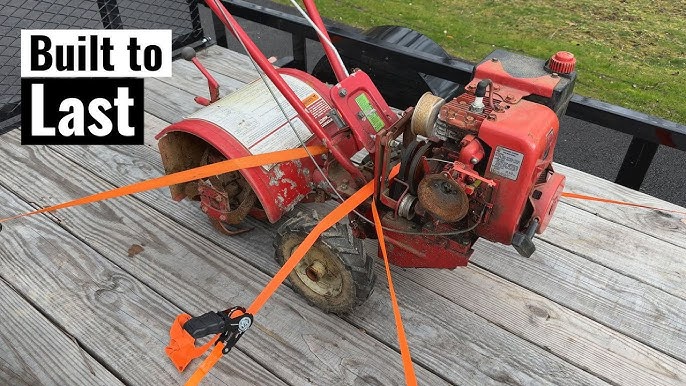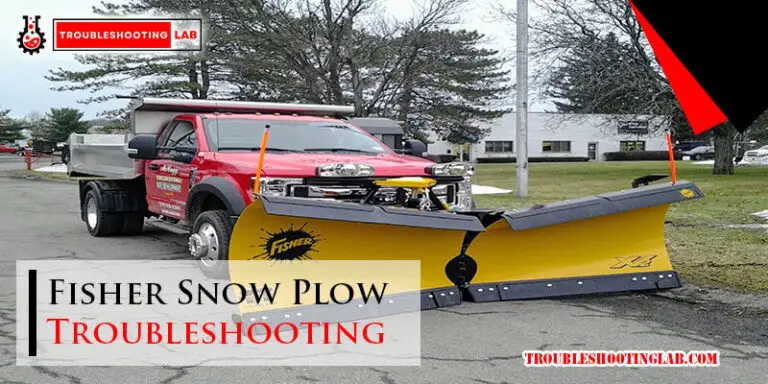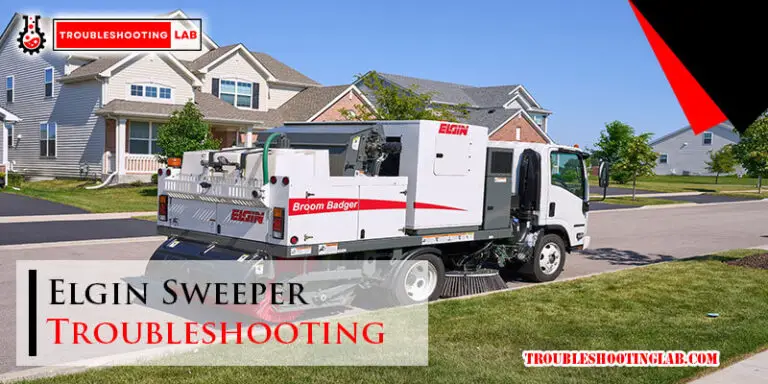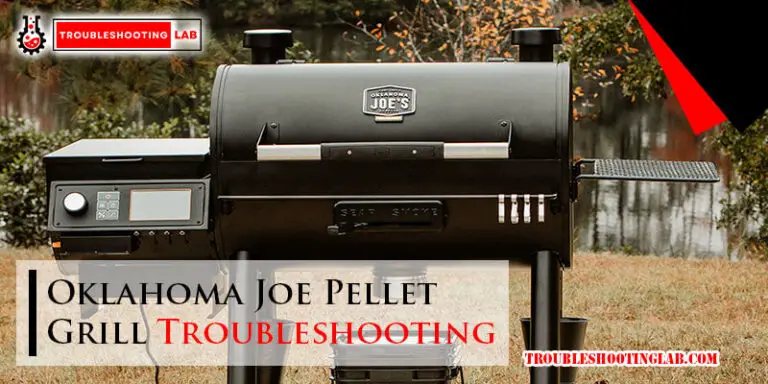Troy Bilt Tiller Troubleshooting: Easy Fixes and Tips
Are you having issues with your Troy Bilt tiller and feeling a bit frustrated? You’re not alone.
Many tiller owners find themselves facing unexpected hiccups that can turn a simple gardening task into a major headache. But don’t worry—you’ve landed in the right place! Imagine how satisfying it will be when your tiller is running smoothly again, effortlessly breaking up soil and preparing your garden for planting.
This article will guide you through the most common problems and solutions, making troubleshooting a breeze. By the end, you’ll feel empowered and ready to tackle any tiller trouble with confidence. So, stay tuned and discover how you can transform your tiller challenges into triumphs!
Common Issues
Troy Bilt tillers are reliable tools for garden enthusiasts. But like any machinery, they can face issues. Understanding common problems helps in quick troubleshooting. This guide covers frequent issues with Troy Bilt tillers. It aims to assist in keeping your tiller in top condition.
Engine Won’t Start
An engine that won’t start is a common problem. Check the fuel level first. Old or stale fuel can cause starting issues. Make sure the fuel is fresh and clean. Inspect the spark plug for dirt or damage. A clean, intact spark plug is crucial for ignition. Ensure the air filter is clear of debris. A clogged filter restricts airflow and hinders starting.
Tiller Vibrates Excessively
Excessive vibration can be alarming. Loose or damaged parts often cause this issue. Inspect the engine mounts and bolts. Tighten any loose ones. Check the tines for bends or breaks. Damaged tines can lead to imbalance and vibration. Ensure the drive belt is in good condition. A worn belt can cause unusual vibrations.
Tines Not Turning
Tines that don’t turn affect tiller performance. Check the drive belt first. A broken or loose belt stops the tines. Inspect the transmission for any issues. Ensure the tine control cable is intact. A damaged cable fails to engage the tines.
Engine Stalls During Use
An engine that stalls can be frustrating. Examine the fuel system for blockages. Dirty fuel lines or filters can cause stalling. Ensure the carburetor is clean and functioning well. Adjust the throttle to the correct setting. Incorrect settings can lead to stalling.

Credit: www.youtube.com
Engine Problems
If you own a Troy Bilt tiller, you know how invaluable it is for preparing your garden. However, like any mechanical equipment, it can encounter engine problems that disrupt your gardening plans. Understanding these issues and knowing how to troubleshoot them can save you time and frustration. Let’s dive into some common engine problems you might face and how to tackle them effectively.
Starting Difficulties
One of the most frustrating issues is when your tiller refuses to start. A simple solution could be checking the fuel level. Ensure there’s enough gas and it’s not stale. Fresh fuel can make a huge difference.
Another culprit could be the spark plug. Inspect it for dirt or damage and replace it if necessary. A clean spark plug ensures a strong ignition.
Think about the choke position. Is it set correctly for a cold start? An incorrect setting can prevent your engine from firing up. Have you faced this issue before, and how did you resolve it?
Overheating Concerns
Engine overheating can halt your progress and potentially damage your tiller. Check the oil level—low oil can lead to increased friction and overheating. Regular oil checks are crucial.
Consider the ventilation around the engine. Obstructions can cause heat build-up. Clear away debris to maintain airflow.
Is your tiller clean? Dirt can accumulate and insulate heat. A quick cleaning session can help prevent overheating. How often do you clean your equipment?
Unusual Noises
Strange noises can be alarming. They might signal loose parts or internal issues. Inspect the tiller for any loose bolts or screws, and tighten them as needed.
Check the engine bearings. Wear and tear can cause rattling sounds. Replacing worn-out bearings can restore smooth operation.
Pay attention to the noise’s source. Identifying whether it’s from the engine or another component can guide your troubleshooting efforts. What’s the strangest noise you’ve heard from your tiller?
Troy Bilt tillers are robust machines, but they require some TLC to perform optimally. Addressing engine problems promptly can extend their lifespan and ensure they’re ready for your next gardening adventure. What steps will you take next time your tiller acts up?
Transmission Troubles
Transmission troubles in a Troy Bilt tiller can be frustrating. These issues often disrupt gardening plans. Understanding common transmission problems can help in troubleshooting effectively. This section explores typical issues and their solutions.
Gear Shifting Issues
Gear shifting problems can halt your tiller’s performance. Sometimes, gears stick or become hard to shift. This often results from worn-out gear components. Inspecting and replacing damaged parts can fix this. Regular maintenance helps prevent gear issues. Lubricating gears can ensure smooth operation. Check the gear linkage for any misalignment. Correcting alignment can ease shifting.
Transmission Fluid Leaks
Transmission fluid leaks can cause serious problems. Leaks affect the tiller’s efficiency. They often stem from damaged seals or gaskets. Identifying and replacing faulty seals is crucial. Regularly check fluid levels to detect leaks early. Low fluid levels can damage the transmission. Proper sealing and timely repairs prevent fluid loss. Maintaining seals ensures optimal performance.

Credit: www.ebay.com
Tines Malfunction
Experiencing tines malfunction on your Troy Bilt tiller can disrupt your gardening tasks. Simple troubleshooting steps, like checking for debris or worn parts, might solve the issue. Regular maintenance ensures smooth operation and prolongs equipment life, helping you get back to preparing your garden efficiently.
Tiller troubles can be frustrating, especially when you’re all set to prepare your garden bed. One of the most common issues is tines malfunction. The tines are the heart of your Troy Bilt tiller, doing the hard work of turning and aerating the soil. When they malfunction, it can bring your gardening plans to a halt. Understanding the cause of the problem can save you time and effort. Let’s dive into some common tine issues and how to address them effectively.Tines Not Rotating
Have you ever fired up your tiller, only to find the tines refusing to spin? It’s a common predicament for many gardeners. This issue often stems from a simple blockage. Rocks, roots, or even a piece of wire can lodge themselves in the tines, preventing rotation. Before you start tinkering, always ensure the tiller is turned off and safely positioned. Check for any visible obstructions and remove them carefully. If you find nothing, the issue might be with the drive belt. Over time, belts can wear out or slip off, causing the tines to stop moving. Inspect the belt for wear and replace it if necessary. You might wonder, how often should you check these components? Regular maintenance is key. Make it a habit to inspect the tines and belt after each use, especially if you’ve been working in rocky or root-filled areas.Uneven Tilling
Uneven tilling can turn your soil preparation into a frustrating ordeal. One moment you’re gliding smoothly, and the next, your tiller is bouncing around like a wild horse. This often happens when the tines are worn unevenly. Examine the tines for any signs of wear or damage. If one side is more worn than the other, it’s time for a replacement. You might be tempted to replace just the damaged ones, but it’s best to change them in pairs to maintain balance. Another culprit could be incorrect depth settings. If your tiller is digging too deep or too shallow, it won’t till evenly. Adjust the depth settings according to your soil type and condition. Soft soils might need less depth, while hard, compacted soils might require more. In my own gardening adventures, adjusting the depth has often made a noticeable difference. It’s like finding that perfect gear on a bicycle; once you get it right, everything runs smoothly. What about you? Have you checked your tines recently? A little attention can go a long way in ensuring your Troy Bilt tiller operates at its best. Remember, a well-maintained tiller is your best ally in creating a thriving garden.Fuel System Challenges
Troubleshooting the fuel system in a Troy-Bilt tiller can be daunting. Understanding common issues helps keep your tiller running smoothly. Fuel system problems often lead to engine stalling or failure to start. Proper maintenance ensures your tiller performs effectively throughout the season. Let’s explore some typical fuel system challenges.
Fuel Supply Blockages
Fuel blockages can restrict the engine’s performance. Dirt or debris in the fuel line can prevent fuel flow. This can cause the engine to sputter or stall. Regularly check the fuel filter for clogs. Clean or replace it as needed. Also, inspect the fuel lines for any visible damage. Cracks or leaks can interrupt fuel supply. Ensure the fuel tank vent is clear to avoid pressure build-up. Keeping your fuel system clean avoids these common blockages.
Carburetor Adjustments
Improper carburetor settings can affect engine performance. A well-tuned carburetor ensures efficient fuel mixing. If your engine idles roughly, adjustments may be necessary. Locate the adjustment screws on the carburetor. Turn them slightly to find the optimal setting. Always refer to the user manual for precise instructions. Regularly cleaning the carburetor prevents residue build-up. This helps maintain a smooth-running engine. Consistent checks ensure your tiller remains reliable and efficient.
Electrical System Hiccups
Dealing with electrical system hiccups in your Troy Bilt tiller can be frustrating. Understanding common issues helps in fixing them quickly. Pay attention to battery and ignition problems. These are often the culprits. Let’s explore how to troubleshoot these electrical challenges effectively.
Battery Issues
Battery problems can cause the tiller to fail. Check if the battery is properly charged. A drained battery won’t power the tiller. Look for corrosion on battery terminals. Clean them to ensure good connection. Use a multimeter to check battery voltage. Low voltage means the battery might need replacement.
Ignition Problems
Ignition issues prevent the engine from starting. Inspect the ignition switch first. Ensure it’s in good condition. A faulty switch disrupts electrical flow. Check the spark plug for damage. It should be clean and in working order. Replace it if necessary. Examine the ignition coil too. A damaged coil affects spark generation.
Routine Maintenance Tips
Regular maintenance keeps your Troy Bilt tiller running smoothly. It prevents unexpected breakdowns. This guide will help you maintain your tiller effortlessly. You will learn simple steps to ensure its longevity. Follow these tips to make your gardening tasks easier.
Regular Cleaning
Cleaning your tiller removes dirt and debris. It keeps parts functioning efficiently. Use a soft brush to clean around moving parts. Ensure the air filter is free of dust. Clean the tines to prevent soil buildup. A clean tiller works better and lasts longer.
Parts Lubrication
Lubrication reduces friction between moving parts. It prevents wear and tear. Apply oil to the engine parts regularly. Grease the tines and blades for smooth operation. Check the owner’s manual for recommended lubricants. Proper lubrication ensures your tiller runs quietly.

Credit: www.powerequipmentdirect.com
Safety Precautions
Ensuring your Troy Bilt tiller operates safely is crucial. Safety precautions prevent accidents and prolong the tiller’s life. Understanding and applying these measures can keep you safe during operation.
Safe Operation Practices
Always read the tiller’s manual before use. It contains vital safety information. Clear the area of rocks, sticks, and other debris. This prevents damage and ensures smooth operation. Keep a firm grip on the handles at all times. This helps maintain control, especially on uneven ground. Never operate the tiller in wet conditions. Wet soil can make the machine slip, increasing risk.
Protective Gear Recommendations
Wear sturdy shoes with non-slip soles. This prevents slipping and provides better grip. Use gloves to protect your hands from blisters and debris. Ear protection is essential if the tiller is loud. It reduces noise impact and protects your hearing. Safety goggles shield your eyes from flying particles.
Frequently Asked Questions
How Do I Fix My Troy Bilt Tiller Not Starting?
Check fuel level and spark plug. Ensure the carburetor is clean. Replace old fuel. Inspect electrical connections.
Why Does My Tiller Vibrate Excessively?
Loose or damaged parts cause vibration. Check bolts and screws. Inspect the tine assembly. Replace worn-out parts.
How To Resolve Troy Bilt Tiller Engine Stalling?
Inspect air filter and fuel lines. Clean or replace them. Check carburetor settings. Ensure proper fuel mixture.
What Causes Troy Bilt Tiller Tines Not To Rotate?
Check drive belt for wear or damage. Inspect transmission. Replace broken belt. Ensure gears are not jammed.
Why Is My Troy Bilt Tiller Losing Power?
Dirty air filter reduces power. Clean or replace it. Check fuel quality. Inspect for clogged fuel lines.
Conclusion
Troubleshooting your Troy Bilt tiller can feel overwhelming. But it’s manageable. Start by checking the fuel. Ensure it’s fresh and clean. Look at the spark plug next. Is it worn out? Replace if needed. Examine the air filter. A clogged filter can cause issues.
Clean or replace it. Check belts for wear and tear. Tighten or replace them if needed. Regular maintenance prevents many problems. Keep a schedule for checks. Your tiller will perform better. Save time and effort in the garden. Enjoy a smoother tilling experience.





